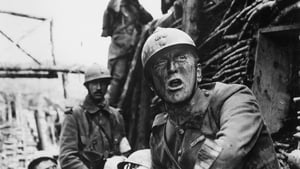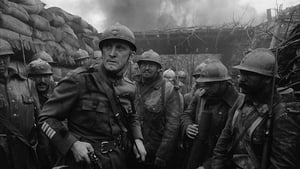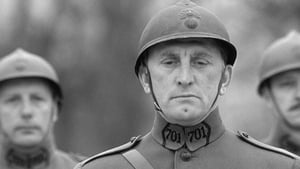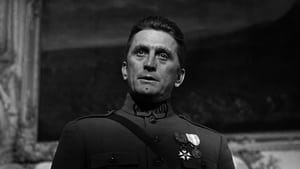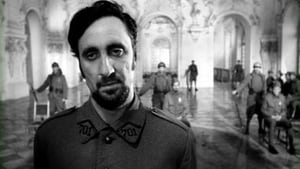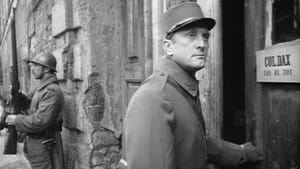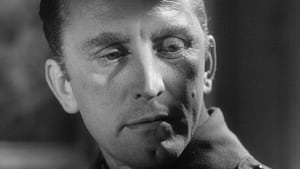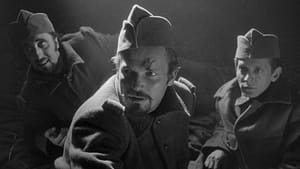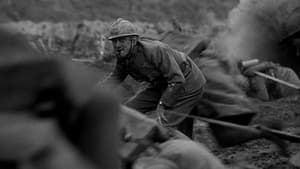Video Sources 0 Views
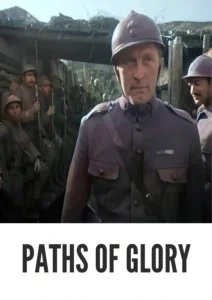
Synopsis

Delve into the stark realities of World War I with Stanley Kubrick’s Paths of Glory, a powerful anti-war film from 1957, now meticulously colorized to enhance its emotional impact. Featuring a brilliant performance by Kirk Douglas, this film explores themes of courage, injustice, and the devastating consequences of war. Perfect for cinephiles and those who appreciate thought-provoking cinema, this HD download offers a fresh perspective on a timeless classic.
Paths of Glory unfolds during World War I, focusing on the French army’s futile attempt to capture a strategic German position known as the “Anthill.” After a disastrous and costly assault, the commanding General Mireau, driven by ambition and detached from reality, demands that three soldiers be court-martialed and executed as an example of the army’s resolve.
Colonel Dax (Kirk Douglas), a compassionate officer and lawyer in civilian life, defends the accused soldiers in a sham trial marked by blatant injustice and political maneuvering. Despite Dax’s valiant efforts to expose the absurdity and corruption of the military court, the soldiers are condemned to death. The film portrays the horrors of war, the abuse of power, and the moral compromises made in the name of duty. Paths of Glory is a searing indictment of war’s dehumanizing effects and a testament to the resilience of the human spirit.
The film boasts a stellar cast, delivering unforgettable performances:
-
Kirk Douglas as Colonel Dax
-
Ralph Meeker as Corporal Paris
-
Adolphe Menjou as General Broulard
-
George Macready as General Mireau
-
Wayne Morris as Lieutenant Roget
Paths of Glory firmly resides in the genre of war drama, with elements of legal drama and social commentary. Its unflinching portrayal of the realities of war and its exploration of moral and ethical dilemmas make it a powerful and thought-provoking cinematic experience.
Released in 1957, Paths of Glory stands as an early masterpiece in Stanley Kubrick’s distinguished filmography, showcasing his distinctive visual style, meticulous attention to detail, and willingness to tackle controversial subjects. The film challenged conventional war narratives and offered a scathing critique of military authority, cementing Kubrick’s reputation as a visionary and uncompromising filmmaker. Despite initial controversy and censorship in some countries, Paths of Glory has since been recognized as a landmark achievement in cinematic history.
This colorized version of Paths of Glory has been carefully restored using advanced digital techniques, enhancing the visual elements while preserving the film’s original atmosphere of tension and drama. The colorization process involved a thorough analysis of the original black and white footage, with color palettes chosen to reflect the historical context and emotional tone of each scene. The result is a visually stunning and emotionally resonant experience that brings new depth and vibrancy to Kubrick’s masterpiece. While debates about colorizing classic films continue, this version offers a fresh way to engage with the film and introduce it to new audiences.
-
: Stanley Kubrick
-
: Stanley Kubrick, Calder Willingham, Jim Thompson
-
: Paths of Glory by Humphrey Cobb
-
: Georg Krause
-
: Eva Kroll
-
: Bryna Productions
-
: United Artists
-
: 88 minutes
-
: MP4
-
: HD (1080p)
-
: Compatible with most devices, including smartphones, tablets, computers, and smart TVs.
Paths of Glory (1957) is widely regarded as one of Stanley Kubrick’s finest films and a powerful statement against the futility of war. Its unflinching portrayal of injustice and its exploration of moral courage have resonated with audiences and critics alike. The film continues to be studied and celebrated for its cinematic artistry and its enduring message of humanity. As a landmark achievement in anti-war cinema, Paths of Glory remains a relevant and important film for contemporary audiences.
-
: What is Paths of Glory about?
-
A: Paths of Glory is an anti-war film about a French army unit during World War I and the court-martial of three soldiers.
-
-
: Is Paths of Glory (1957) a well-known Kubrick film?
-
A: Yes, Paths of Glory is one of Stanley Kubrick’s most acclaimed and influential early works.
-
-
: Is this version of Paths of Glory colorized?
-
A: Yes, this version has been professionally colorized to enhance the viewing experience.
-
-
: What makes Paths of Glory important?
-
A: Paths of Glory offers a powerful critique of war and injustice, showcasing Kubrick’s distinctive style and vision.
-
-
: What is the download format?
-
A: The download format is MP4, which is compatible with most devices.
-
-
: What resolution is the download?
-
A: The resolution is HD (1080p), providing a high-quality viewing experience.
-
Watch Paths of Glory Today!
